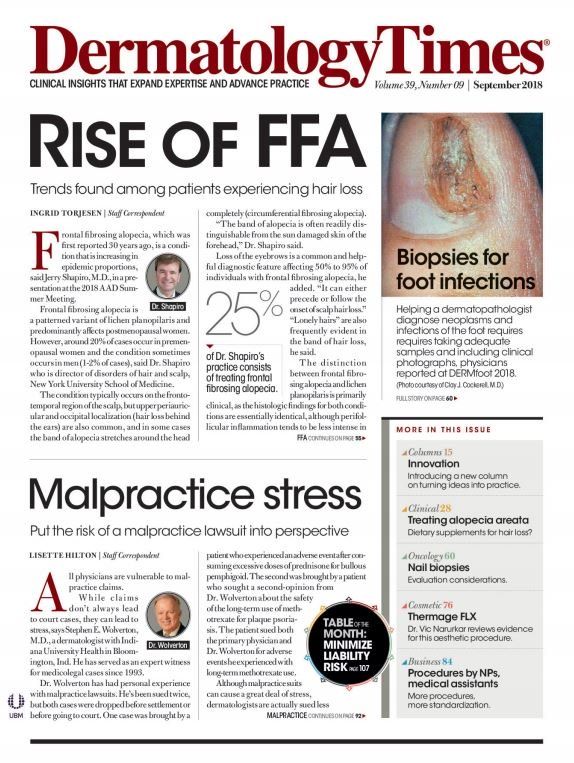- Case-Based Roundtable
- General Dermatology
- Eczema
- Chronic Hand Eczema
- Alopecia
- Aesthetics
- Vitiligo
- COVID-19
- Actinic Keratosis
- Precision Medicine and Biologics
- Rare Disease
- Wound Care
- Rosacea
- Psoriasis
- Psoriatic Arthritis
- Atopic Dermatitis
- Melasma
- NP and PA
- Skin Cancer
- Hidradenitis Suppurativa
- Drug Watch
- Pigmentary Disorders
- Acne
- Pediatric Dermatology
- Practice Management
- Prurigo Nodularis
- Buy-and-Bill
Publication
Article
Dermatology Times
A new treatment for seborrheic keratosis examined
Author(s):
Until the approval of Eskata (hydrogen peroxide) for the treatment of raised seborrheic keratosis back in December, there was no FDA-approved treatment for this condition. Learn the latest in this article.
Until the approval of Eskata (hydrogen peroxide) for the treatment of raised seborrheic keratosis back in December, there was no FDA-approved treatment for this condition.
“Seborrheic keratoses are one of the most frequent diagnoses made by dermatologists. We are proud to offer Eskata as an innovative therapy that addresses a significant unmet need in dermatology,” said Neal Walker, M.D., chief executive officer of Aclaris Therapeutics, the product manufacturer.
Pipeline data about Eskata was presented at the 2018 American Academy of Dermatology Summer Meeting in Chicago in July.
Intended for in-office, dermatologist-applied use only, this 40 percent hydrogen peroxide topical solution is colorless and clear. It can be directly applied to a patient’s seborrheic keratosis using a pen-like applicator in two treatments approximately three weeks apart. Each treatment includes four applications to the targeted lesions roughly one minute apart. Patients can receive a second treatment, as needed.
According to company data, there is no risk to an unborn fetus or breastfeeding infant if the mother uses Eskata. However, you should wear protective nitrile or vinyl gloves when preparing and administering the solution.
Clinical trials were performed to determine whether Eskata safe and effective for patients. Of the 937 participants included, 42 percent were men, and 58 percent were women. The average age was 68.7 years, and 98 percent were Caucasian. Each participant was treated with four applications during an initial baseline visit, and an additional treatment was provided at day 22, if needed. Investigators followed patient progress through day 106. According to study results, 13-23 percent of patients received a clear diagnosis for at least three out of four lesions upon finishing the treatment protocol.
REFERENCE
Brett King, MD. “Treating Alopecia Areata, Vitiligo, and Atopic Dermatitis: JAK Inhibitors, Something New for Dermatology.” American Academy of Dermatology 2018 Summer Meeting, Chicago, Ill. July 29, 7:30-8:30 am







